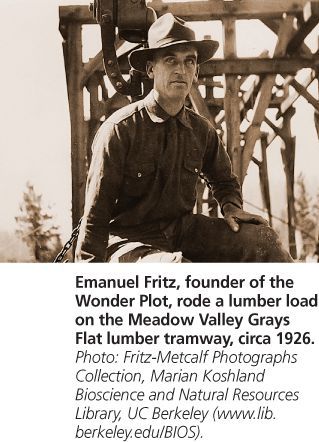 Redwoods grow quickly, but live for centuries, which makes tracking their life history a long-term project. But in a remote 1-acre plot in southern Mendocino county, exactly such a project has been underway since the early 1920s.
Redwoods grow quickly, but live for centuries, which makes tracking their life history a long-term project. But in a remote 1-acre plot in southern Mendocino county, exactly such a project has been underway since the early 1920s.
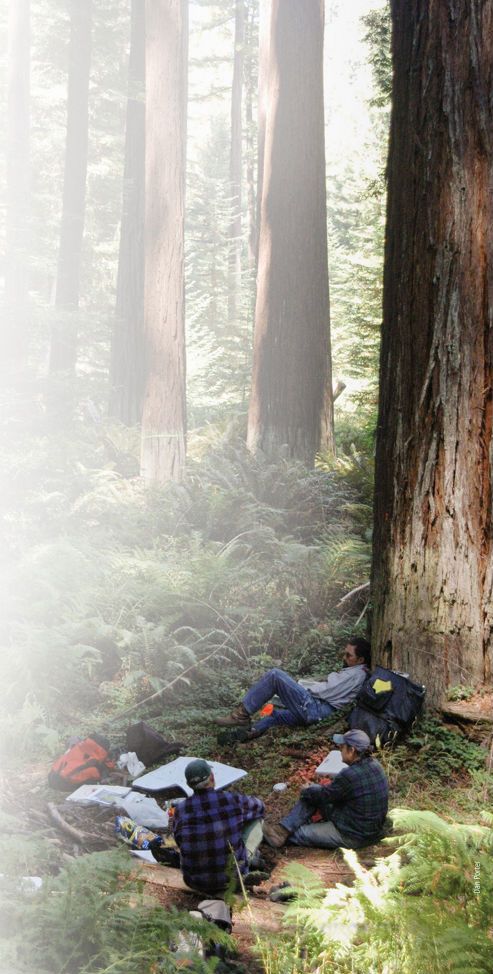 Clear-cutting of redwood forests was already widespread by the 1920s. It was on such a denuded plain that UC Berkeley forester Emanual Fritz established his "Wonder Plot," explains Cooperative Extension advisor Greg Giusti, which is a big part of the reason that one-acre site differs from untouched old growth forests elsewhere.
Clear-cutting of redwood forests was already widespread by the 1920s. It was on such a denuded plain that UC Berkeley forester Emanual Fritz established his "Wonder Plot," explains Cooperative Extension advisor Greg Giusti, which is a big part of the reason that one-acre site differs from untouched old growth forests elsewhere.
At left, Greg Giusti leans agains a tree with researchers taking a break from measuring the trees in the Wonder Plot in August, 2005.
 Community gardens, walking and bicycle paths, meandering creeks, and a habitat corridor for wildlife. All of these could be part of an urban open space "greenway" in a concentrated residential area of Southeast Santa Rosa.
Community gardens, walking and bicycle paths, meandering creeks, and a habitat corridor for wildlife. All of these could be part of an urban open space "greenway" in a concentrated residential area of Southeast Santa Rosa.
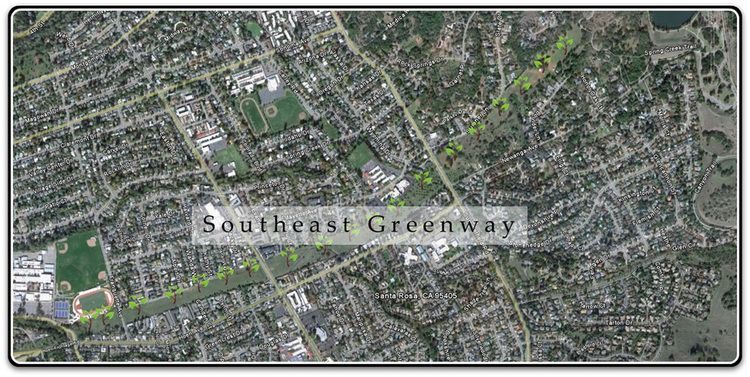
As seen in this ariel view, the former Highway 12 extension and potential future Southeast Greenway bends through a fullly developed urban neighborhood. That, says Linda Proulx, co-chair of the Southeast Santa Rosa Greenway Campaign, means a corridor of vacant property that has multiple existing access points (most of them currently fenced off) as well as a sense of untouched Nature.
When the team from the American Institute of Architects is here, June 6-8, Proulx says their role will be to collect as many ideas as possible for the future use of the Greenway corridor, and begin to distill them into an actualplan for the space.

Jonathan Glass, who will be leading additional tours of the greenway site on May 17 and June 23, envisions a scattering of community gardens when the project is finally implemented, such as the Bayer Farm site (seen at right) that Landpaths has cultivated in the Roseland neighborhood.
 Another core constituency for the Greenway project, predicts Linda Proulx, will be bicyclists, who would benefit from a central link between two of the county's most popular existing riding areas.
Another core constituency for the Greenway project, predicts Linda Proulx, will be bicyclists, who would benefit from a central link between two of the county's most popular existing riding areas.

 There is no single path to a healthier Sonoma County, participants at a conference on health an poverty were reminded yesterday. But getting there will require getting off the systemic treadmills that aren't working now.
There is no single path to a healthier Sonoma County, participants at a conference on health an poverty were reminded yesterday. But getting there will require getting off the systemic treadmills that aren't working now.
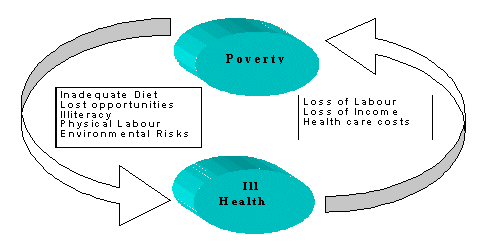 For much of the past decade, Dr. Anthony Iton, now the vice president of Healthy Communities for the California Endowment, has been pointing out the high correlations between poor health, decreased life expectancy, and poverty. Now the challenge is addressing those root causes, which often concentrate low income households in neighborhoods with weak schools, scarce public transit, limited employment opportunities, and myriad other obstacles to success. This doesn't happen by accident, exactly; it's the result of policy decisions—typically made at a distance—that carry unintended but negative consequences for those neighborhoods. Because those areas tend to be home to people of color, Iton explains, this convergence of barriers has come to be characterized by the term, "structural racialization."
For much of the past decade, Dr. Anthony Iton, now the vice president of Healthy Communities for the California Endowment, has been pointing out the high correlations between poor health, decreased life expectancy, and poverty. Now the challenge is addressing those root causes, which often concentrate low income households in neighborhoods with weak schools, scarce public transit, limited employment opportunities, and myriad other obstacles to success. This doesn't happen by accident, exactly; it's the result of policy decisions—typically made at a distance—that carry unintended but negative consequences for those neighborhoods. Because those areas tend to be home to people of color, Iton explains, this convergence of barriers has come to be characterized by the term, "structural racialization."
 America is not good for your health," Iton says." People come here and the longer they stay, the worse their health gets." But there are expectations, notably among Latinos, a disparity so conspicuous and mysterious it's been called the Immigrant Health Paradox.
America is not good for your health," Iton says." People come here and the longer they stay, the worse their health gets." But there are expectations, notably among Latinos, a disparity so conspicuous and mysterious it's been called the Immigrant Health Paradox.
 One factor, Iton adds, may be a higher level of social support within those immigrant communities.
One factor, Iton adds, may be a higher level of social support within those immigrant communities.
 Humans have been burning wood for millennia, but new research indicates that breathing in the smoke from those fires can have negative health impacts that reach all the way down to your DNA.
Humans have been burning wood for millennia, but new research indicates that breathing in the smoke from those fires can have negative health impacts that reach all the way down to your DNA.
 A wood smoke particle taken from a human lung, seen enlarged 900x.Enviromental Health News reporter Cheryl Katz has written extensively on this issue. She also offers some tips for wood stove usage that will minimize the production of hazardous woodsmkoe particles.
A wood smoke particle taken from a human lung, seen enlarged 900x.Enviromental Health News reporter Cheryl Katz has written extensively on this issue. She also offers some tips for wood stove usage that will minimize the production of hazardous woodsmkoe particles.


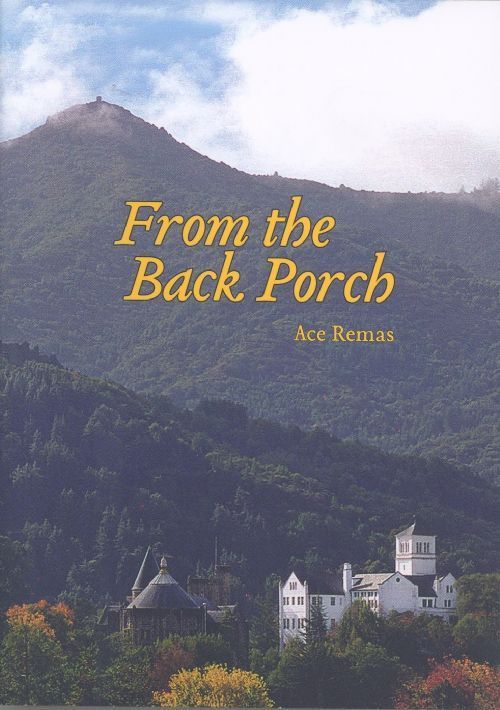 Today, Ace Remas teaches Buddhist meditation, but there was a time—captured in his community newspaper editorials—when his teachers were his two young sons.
Today, Ace Remas teaches Buddhist meditation, but there was a time—captured in his community newspaper editorials—when his teachers were his two young sons.
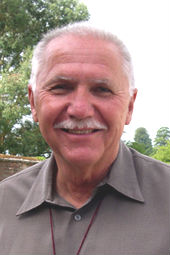 Ace RemasFor the not-quite-four-years that Ace and Marsha Remas owned and published the Twin Cities Times, he recalls, putting out the weekly newspaper was very much a family affair.
Ace RemasFor the not-quite-four-years that Ace and Marsha Remas owned and published the Twin Cities Times, he recalls, putting out the weekly newspaper was very much a family affair.
Ace Remas will read from From the Back Porch at Book Passages in Corte Madera on Saturday, April 23 at noon. He's expecting to see a lot of familiar faces there.
The Twin Cities Times continues to publish today, as part of the Marinscope group of papers. Ace Remas is active as a meditation leader and teacher at the Mahakaruna Buddhist Meditation Center in Petaluma.
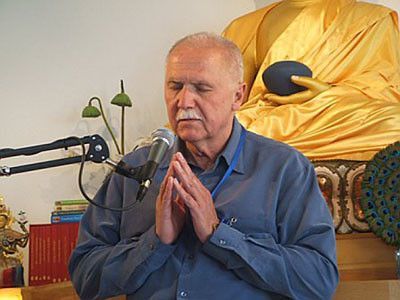

 Live Radio
Live Radio